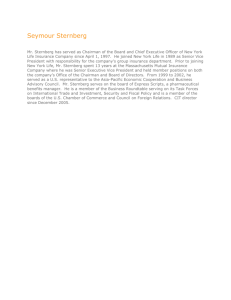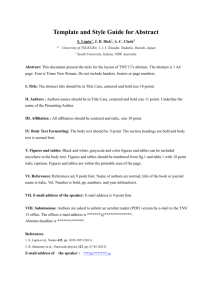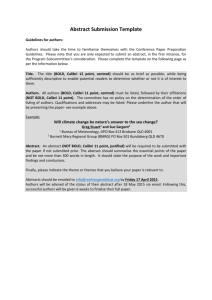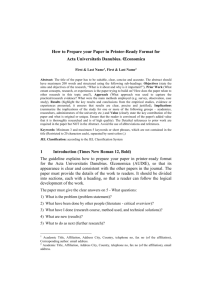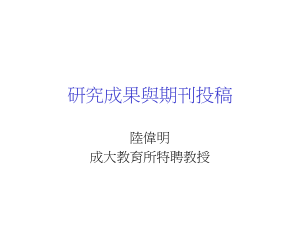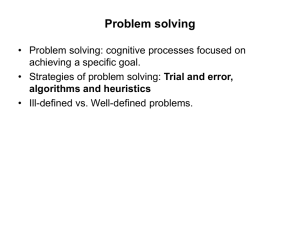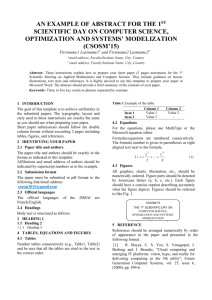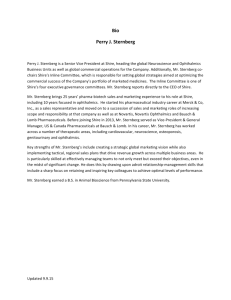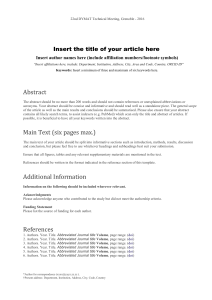APA Style Guide Brief Intro
advertisement
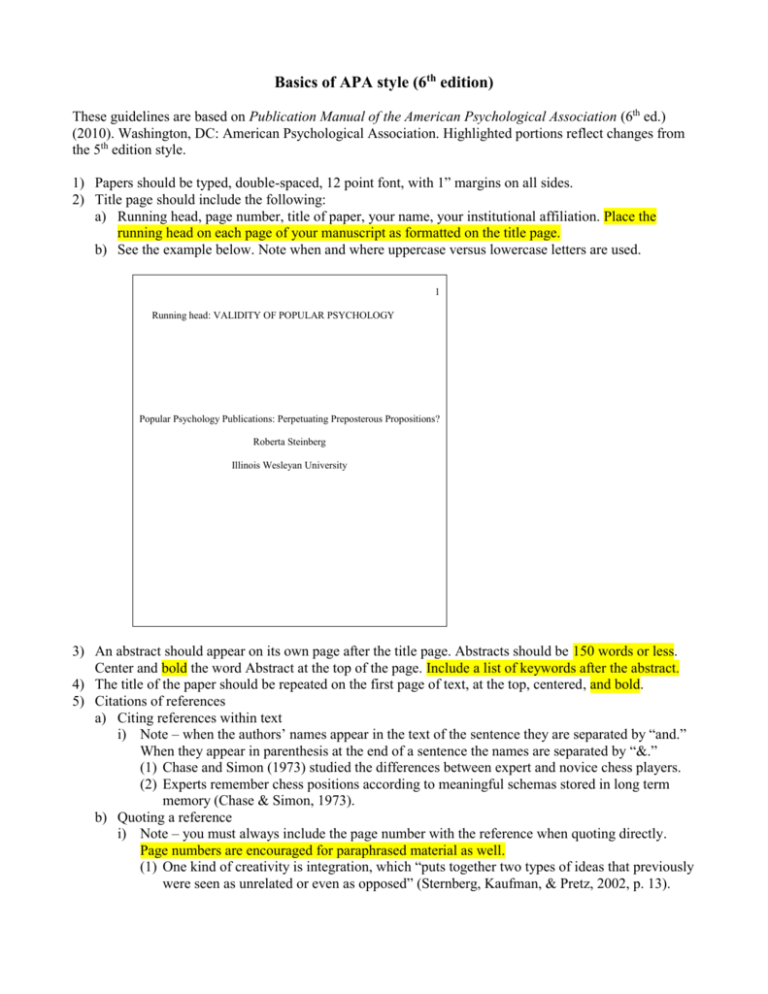
Basics of APA style (6th edition) These guidelines are based on Publication Manual of the American Psychological Association (6th ed.) (2010). Washington, DC: American Psychological Association. Highlighted portions reflect changes from the 5th edition style. 1) Papers should be typed, double-spaced, 12 point font, with 1” margins on all sides. 2) Title page should include the following: a) Running head, page number, title of paper, your name, your institutional affiliation. Place the running head on each page of your manuscript as formatted on the title page. b) See the example below. Note when and where uppercase versus lowercase letters are used. 1 Running head: VALIDITY OF POPULAR PSYCHOLOGY Popular Psychology Publications: Perpetuating Preposterous Propositions? Roberta Steinberg Illinois Wesleyan University 3) An abstract should appear on its own page after the title page. Abstracts should be 150 words or less. Center and bold the word Abstract at the top of the page. Include a list of keywords after the abstract. 4) The title of the paper should be repeated on the first page of text, at the top, centered, and bold. 5) Citations of references a) Citing references within text i) Note – when the authors’ names appear in the text of the sentence they are separated by “and.” When they appear in parenthesis at the end of a sentence the names are separated by “&.” (1) Chase and Simon (1973) studied the differences between expert and novice chess players. (2) Experts remember chess positions according to meaningful schemas stored in long term memory (Chase & Simon, 1973). b) Quoting a reference i) Note – you must always include the page number with the reference when quoting directly. Page numbers are encouraged for paraphrased material as well. (1) One kind of creativity is integration, which “puts together two types of ideas that previously were seen as unrelated or even as opposed” (Sternberg, Kaufman, & Pretz, 2002, p. 13). c) Citing secondary sources i) Note – you should always cite primary sources whenever possible. If you cannot access the primary source, you may refer to it as cited in the secondary source. Include only the secondary source in the reference list. (1) In the mid-20th century, creativity research was strongly encouraged in an APA presidential address (Guilford, 1950 as cited in Sternberg & Lubart, 1996). d) Multiple authors i) When citing a work with three or more authors, refer to the first author followed by “et al.” after citing it the first time in the paper. If the work has six or more authors, use “et al.” beginning with the first in-text citation. (1) Another kind of creativity is called reinitiation, referring to cases in which a creator rejects ideas in the field and proposes a completely new idea from a fresh starting point (Sternberg et al., 2002). e) Formatting the reference list i) Research article Sternberg, R.J., & Lubart, T.I. (1996). Investing in creativity. American Psychologist, 51, 677-688. doi: 10.1037/0003-066X.51.7.677 Note – if the DOI is not available on the title page or complete reference in PsycINFO, use the URL of the journal homepage instead. ii) Chapter in an edited book Weisberg, R.W. (1999). Creativity and knowledge: A challenge to theories. In R.J. Sternberg (Ed.), Handbook of creativity (pp. 226-250). New York, NY: Cambridge University Press. iii) Book Sternberg, R.J., Kaufman, J.C., & Pretz, J.E. (2002). The creativity conundrum: A propulsion model of kinds of creative contributions. New York, NY: Psychology Press. iv) Multiple authors (1) List all authors in the reference list in order of appearance on the title page of the work. When a work has seven or more authors, list the first six followed by an ellipsis and the last author. (2) Grigorenko, E.L., Geissler, P.W., Prince, R., Okatcha, F., Nokes, C., Kenny, D.A., …, Sternberg, R.J. (2001). The organisation of Luo conceptions of intelligence: A study of implicit theories in a Kenyan village. International Journal of Behavioral Development. 25, 367-378. doi: 10.1080/01650250042000348 6) Headings a) Use headings like an outline to organize your paper. Format them as shown below. Heading Level One is in capitalized terms, centered and bold Heading Level Two is in capitalized terms, left-justified and bold Heading level three is indented, bold, with period at the end. Text follows on the same line. Heading level four is the same as level three but in italics. Text follows on the same line. Heading level five is the same as level four but not bold. Text follows on the same line. Prepared by Jean Pretz, Psychology Department, Illinois Wesleyan University, 9/14/09
